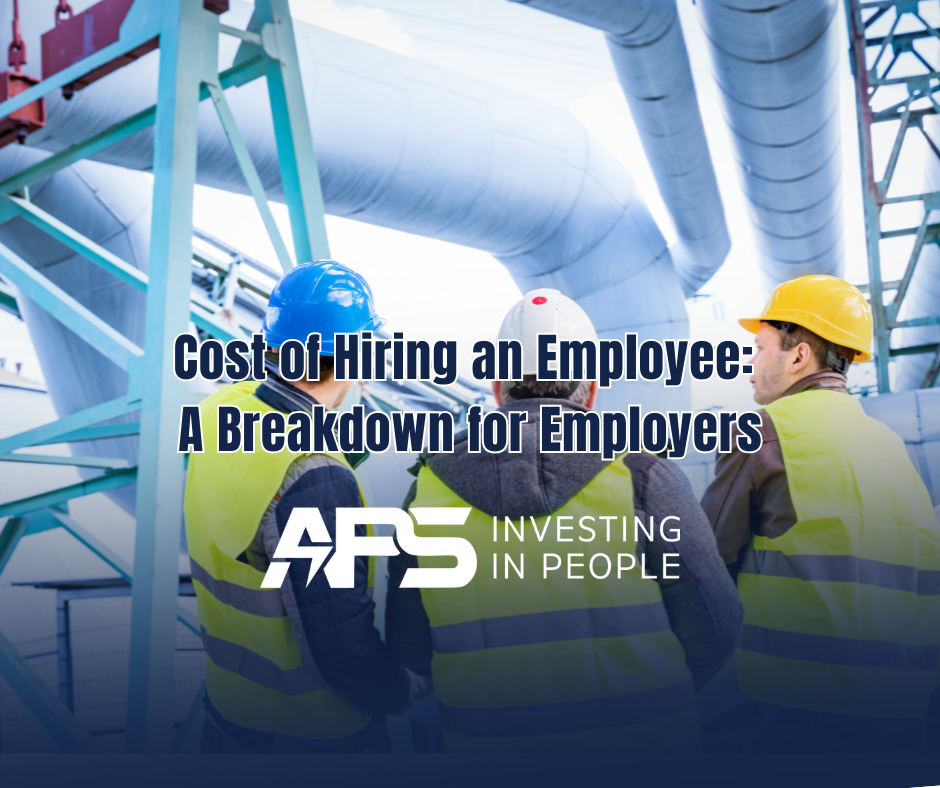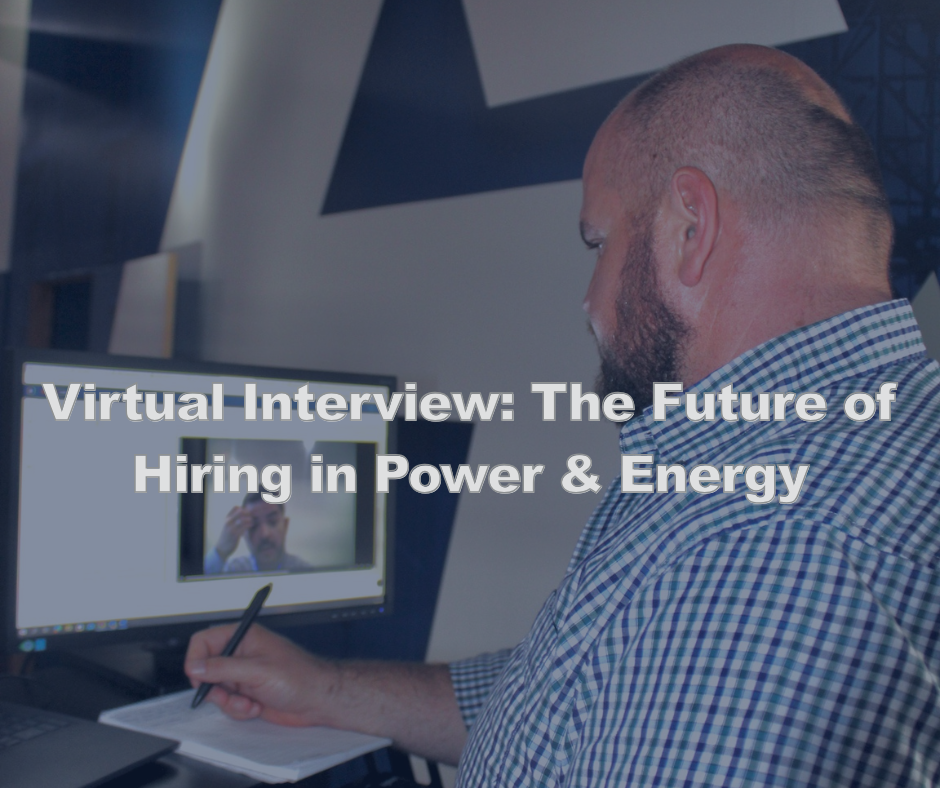
Managing operational budgets while navigating the intricate cost of hiring remains a critical challenge for power plant managers. High turnover rates, the demand for specialized skills, and the constant need to maintain operational efficiency create a complex landscape. In an industry where reliability and safety are paramount, finding the right talent without exceeding budget constraints is essential.
This blog explores practical strategies tailored for power plants to reduce hiring costs, address staffing challenges, and ensure long-term operational success. We’ll delve into understanding the true cost of hiring, optimizing workforce planning, and leveraging innovative staffing models to build a resilient and cost-effective team. By the end, you’ll discover how APS Solutions can be a trusted partner in developing and implementing effective staffing strategies.
Understanding The Cost of Hiring an Employee
Before diving into solutions, it’s essential to understand the true cost of hiring an employee. This encompasses not just salary, but also recruitment fees, onboarding expenses, benefits packages, and the potential loss of productivity during vacant periods. By addressing these factors proactively, power plants can significantly reduce overall expenditures.
Optimizing Workforce Planning
Effective workforce planning is key to minimizing hiring costs while maintaining plant safety and productivity.
A well-thought-out staffing plan should include:
- Data-Driven Hiring Decisions: Use workforce analytics to project upcoming staffing needs and identify skill shortages before they become critical.
- Flexible Staffing Models: Consider contract-based or temporary experts for short-term projects, minimizing fixed costs.
- Safety and Reliability Standards: Create plans that balance cost reductions without compromising safety, one of the cornerstones of power plant operations.
By creating adaptable workforce plans, power plants can ensure smooth operations while cutting unnecessary expenses.
The Role of Up-Skilling in Reducing Hiring Costs for Power Plants
Hiring specialized workers in the energy sector often comes with steep costs. Up-skilling your current team can be a more cost-effective solution. Investing in employee development programs allows managers to cultivate in-house talent capable of fulfilling critical roles.
Consider implementing these up-skilling initiatives:
- Collaborate with Industry Experts: Work with training organizations to teach employees high-demand skills.
- Offer Certification Programs: Help staff achieve necessary technical certifications through accessible courses.
- Continuous Development: Create a learning culture by scheduling quarterly training workshops.
Retaining and developing existing employees reduces external hiring costs while ensuring long-term staff loyalty.
Innovative Staffing Models for Intermediate and Peaking Plants
For facilities like intermediate or peaking plants, staffing needs fluctuate with demand. Traditional hiring practices aren’t always efficient in these contexts. Flexible staffing models, such as seasonal hiring or shared resources, can bridge the gap effectively:
- Seasonal Staffing: Hire part-time or project-based workers during high-demand seasons, reducing labor costs during off-peak periods.
- Shared Resource Models: Pool resources with nearby plants for specific tasks that don’t require full-time employees, like maintenance or inspections.
By adopting these models, power plants can achieve scalable staffing solutions that balance fluctuating operational demands with cost savings.
Digitalization and AI: Cost of Hiring an Employee
Power plants implementing digital transformation see a significant reduction in staffing costs. AI and automation streamline workflows, enhance decision-making, and reduce the need for extensive human oversight. Take BP, for example—recent cost-cutting efforts included digitizing operations.
Here’s how digital solutions help reduce hiring needs:
- Predictive Maintenance: AI tools monitor equipment for potential failures, reducing the need for large maintenance teams.
- Automated Monitoring: Automated software proactively identifies inefficiencies in plant operations, often eliminating the need for manual monitoring.
- Enhanced Recruitment Processes: AI in recruitment systems speeds up candidate selection by matching skills to plant-specific roles.
Automation and the Rise of Specialized Roles
As energy efficiency technologies become more prevalent, automation takes center stage. Predictive maintenance, powered by AI and machine learning, reduces the need for constant manual inspections and repairs. Automated systems can optimize energy consumption, detect anomalies, and even adjust operational parameters in real-time.
This automation necessitates a workforce capable of understanding and managing these complex systems. Instead of needing a large team for routine checks, power plants require specialists in data analytics, cybersecurity, and advanced engineering. These roles, while demanding higher skill sets, can be filled by up-skilling existing employees or hiring fewer, highly qualified professionals, thus impacting the overall cost of hiring an employee.
Creating a Culture of Cost-Consciousness in Hiring Practices
Integrating cost-conscious practices into the hiring process doesn’t mean compromising talent quality—it means working smart. Power plants can do so by:
- Streamlining Job Descriptions: Write clear, targeted job listings to better attract candidates that meet specific needs, preventing high turnover.
- Centralizing Recruitment Efforts: Use a specialist like APS to handle all staffing operations, ensuring it’s done cost-effectively.
- Regular Reviews: Audit hiring budgets yearly to identify inefficiencies and work with a staffing partner to create a strategic staffing plan.
When looking at the cost of hiring an employee it is important to look at the entire process. To truly control this cost, a company must create a cost-conscious culture. This will help to reduce unneeded spending in all aspects of the hiring process.
Balancing the Cost of Hiring an Employee in the Energy Sector
While balancing the cost of hiring an employee is a crucial component of operational efficiency, power plants cannot afford to compromise on talent quality. Attracting and retaining top-tier professionals requires more than just competitive salaries; it demands a compelling employer brand that resonates with the values and aspirations of today’s workforce. In the energy sector, this means showcasing a commitment to innovation, sustainability, and unwavering safety standards.
Prospective employees, particularly those with specialized technical skills, are increasingly drawn to organizations that prioritize forward-thinking solutions and environmental responsibility. Highlighting investments in AI-driven operational enhancements and cutting-edge safety protocols signals a commitment to progress and positions the power plant as a leader in the industry. Beyond these core values, a strong employer brand also encompasses the overall employee experience. Demonstrating a supportive and inclusive work environment, fostering opportunities for professional growth, and recognizing employee contributions are essential for building a reputation as an employer of choice.
Furthermore, in a rapidly evolving job market, flexible benefits are no longer a luxury, but a necessity. Offering options like hybrid work arrangements for suitable roles, comprehensive professional development programs, and clear pathways for career advancement significantly enhances a power plant’s attractiveness to high-caliber candidates. These benefits not only cater to the diverse needs of modern professionals but also demonstrate a commitment to employee well-being and long-term career success. By cultivating a strong employer brand and offering competitive, flexible benefits, power plants can ensure they attract and retain the skilled workforce necessary to thrive in the dynamic energy landscape.
Enhancing Recruitment Savings by Partnering With APS
Amidst all these strategies, who you partner with for staffing matters. At APS Solutions, we specialize in custom workforce planning for power plants, finding ways to save on hiring without compromising quality.
We offer:
- Proven Industry Expertise: Our skilled pool of vetted professionals aligns perfectly with power industry roles.
- Customized Solutions: We tailor staffing models to match your operational needs, whether temporary, seasonal, or permanent placements.
- Cost Transparency: No hidden expenses—we work with your budget to deliver maximum value.
Take the First Step Toward Cutting Hiring Costs
Reducing the cost of hiring an employee doesn’t have to be complex for power plant managers. With the right strategies—including local hiring, strategic workforce planning, and technological adoption—it’s possible to strike the perfect balance between cost savings and operational excellence.
APS Solutions is here to help power plants achieve these goals. Connect with us today to explore tailored staffing solutions that reduce costs, enhance efficiency, and support your plant’s long-term success.






